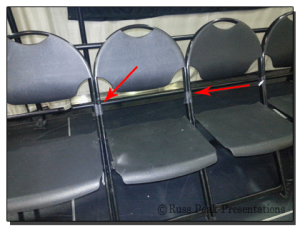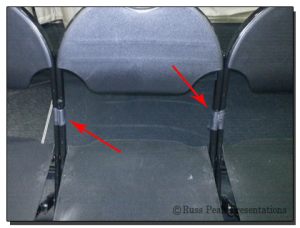Leadership Ideas!
Leadership Game | Words of Wisdom Student Leadership Quote Game
Leadership Game | Words of Wisdom Student Leadership Quote Game
[divider height=”30″ line=”1″]
Description
Students walk around the room reading a series of posters, each which display a different quote highlighting a possible quality of a leader (quotes provided). Every student chooses a quote to stand by that illustrates the concept of leadership closest to their own beliefs. A discussion of leadership qualities proceeds from there.
Purpose
This is a great lead-in to discussing qualities of a leader with your students. The students begin by reading and thinking about leadership concepts and philosophies as spoken by some of our world’s greatest leaders. They continue with a discussion on the various qualities of leaders and identify their own leadership beliefs and styles.
Materials Required
- Scotch Tape
- 15-20 signs with leadership quotes – 20 Awesome Leadership Quotes PDF
- Optional but recommended: A whiteboard to right down leadership quality answers
Time to Play
30-45 minutes
[divider height=”30″ line=”1″]
INSTRUCTIONS
The set-up:
-
Print out 20 Awesome Leadership Quotes PDF .
- Depending on the size of your group, pick out 10-20 quotes that you would like to use for your game.
- Tape the quotes on the walls in no particular order. Several students may gather around certain quotes, so leave plenty of room between each poster.
The game:
- Ask the participants to leave their chairs and walk around the room reading each of the quotes.
- Instruct them to choose and stand by one quote that best relates to their own view on what makes a good leader.
- When everyone has selected a quote, have them discuss among others who chose the same quote why that quote is important to them. Note: the number of participants gathered around each quote will likely vary.
- Encourage the group to share their own leadership experiences that illustrate their quote.
- Each quote group will then select a member who will share the groups view and give examples.
- Have each group’s spokesperson explain to the rest of the room the reason behind their choice using some of the examples provided by the group. Talk about the importance of the identified leadership skill.
- Proceed moving from quote to quote allowing each group to answer and discuss their leadership beliefs as it relates to their quote.
[divider height=”30″ line=”1″]
DISCUSSION IDEAS
If possible, write your key ideas on the white board. These can launch further discussion questions or a lead-in to additional leadership content.
1. Ask the students to identify and discuss each of the core leadership concepts illustrated within each quote. Lead a discussion on which concepts are important to leadership. Encourage your student leaders to use specific and personal examples.
2. Discuss with your class the importance of each of these leadership qualities as they apply to student leadership and leading a campus. Ask “Are there some qualities more important than others?” “Why?”
3. Illustrate common or hypothetical challenges that your student leaders might face as they fulfill their role as a leader on campus. Have your students identify and discuss which leadership qualities might be useful to handle each situation.
4. Ask “What are the benefits of working as a leadership team as we proceed to lead our campus?” “Is a combination of student leaders and student council officers with different strengths more beneficial than one leader in complete control of the leadership vision?”
5. With your leadership qualities identified and written on the whiteboard, ask your group to call out the names of leaders both admired and hated that exhibit some of these leadership qualities and write them on the board. You will hear names of both popular leaders like Martin Luther King and Mahatma Gandhi as well as some leaders not so admired. Discuss how these leaders were effective leaders no matter if we agree with their leadership goals and direction. For example, Adolf Hitler may have been an evil man but he certainly had strong belief in his vision, his ability to move a nation, as well as other leadership qualities.
6. The 20 Leadership Quotes PDF includes the quote: “Leadership is something I was born with.” If you choose to use this quote in your game it can be a great lead-in to the sometimes controversial discussion whether leaders or born or made.
[divider height=”30″ line=”1″]
COMMENTS
- Ideas stick better when accompanied by a personal example. Your students will gain greater retention of your discussion points when they accompany their basic answers with an example or descriptive story, hypothetical or real, that involves how they have or will use their leadership skills in a personal away. Encourage this sort of response and ask follow up questions if you must.
- Use this as a anti-bullying game! Switch out the leadership quotes for quotes relating to respect, tolerance, and other key words that can lead to anti-bullying discussion.
- A better formatted version of leadership quotes PDF coming soon!
- New at leading group games? Check out this article that explains the simple secrets that will leave you leading games like a pro! Playing With A Purpose: Simple Secrets To Leadership Games That teach And Inspire
• • • •
Do you have a great follow up discussion question or idea that would add to this activity? Do you know a variation or game twist not included here? Or perhaps you know a different game or activity that leadership teachers and trainers could use as a starting point to discuss leadership qualities and leadership styles with their students. Let us know! We want to hear from you!
Leadership Game | “Yes! And…” | A Fun Improv Game With A Leadership Lesson!
Leadership Game | “Yes! And…” | A Fun Improv Game With A Leadership Lesson!
Description
In college, I took Improvisation for Actors. It was a class where through interactive games, you practice acting, problem solving, or just reacting in the moment and in response to the stimulus of one’s immediate environment and inner feelings. One of my favorites that semester was the game: “Yes! And…” It’s purpose, I was told, was to ingrain the actor in me with a positive mindset – a skill necessary not just for acting and improv, but also for anyone who wishes to be an effective leader.
Throughout the game, volunteers come to the front one pair at a time and converse with each other in front of the group. However, the players must always beginning every response with “Yes and…” then continue the sentence in a positive manner following the lead of your partner. It’s not only a fun way to play and bond with your team, it also leads in to a great leadership discussion.
Purpose
Quick and positive thinking are highly valued in improvisation because when a player adopts a negative mindset (using “But” or “No”) a scene will not advance optimally and naturally as is the intent. However, these skills are also necessary for anyone who wishes to be an effective leader. Leaders often need to exhibit a forward moving attitude even when the unexpected occurs and adapt to new directions and ideas that might be different from their own personal vision or beliefs. This great game is great for practicing positive thinking and lots of fun too! It also teaches you how to always have something to say.
Group Size
15-25 participants. Smaller groups work best but I’ve used this well in groups of 250+.
Only 2 volunteers play at a time in front of the group.
Materials Required
No materials required.
optional – use a dry erase board for writing participant’s key point answers and “a-ha!” moments during discussion.
Time Required
10-15 minutes
[divider height=”30″ line=”1″]
INSTRUCTIONS
Step 1:. You will explain the rules of “Yes! And…” giving a sample dialog with yourself, or if possible, enlist the aid of a student helper who has played before or who you can teach the game prior to the session
Tell your group:
In this game partners will have a discussion between themselves in which both must listen to what their partner says, then respond to whatever it was they said beginning your sentence with the words “Yes! And…” then complete the sentence in a positive upbeat manner that will not only support but expand the original concept bringing it to the next level.
For example
Player A says: “This classroom is sure filled with a bunch of desks!”
Player B responds: “Yes! And I heard that at last count there was more that a million!”
Player A says: “Yes! And if we stacked them all one on top of the other they would reach the moon!”
Player B responds: “Yes! And that would sure be a great way to get to the moon rather that a rocket.”
Player A responds:“Yes! And I’ve always wanted to go to the moon since I’ve heard its made of green cheese!”
Play B responds: “Yes! And I hear that every third Friday is cheese tasting night up there!”
Explain: Players will continue this conversation until I shout “Cut!”
Step 2: Pick two volunteers who want to give it a go!
Step 3: Either allow the first speaker to begin with a random statement or involve your group letting them call out a topic for the players to follow.
Step 4: Let them create their dialogue allowing it to grow more and more outrageous. When the pair reaches a big laugh shout “And… Cut!” in your favorite Hollywood director voice. If they don’t reach a laugh cut them after several responses and send them off with applause as well.
Step 5: Always, encourage players to “Thank your partner for playing with you!” before they part.
Step 6: Allow every pair of volunteers to return back to the group with a round of applause.
Step 7: Bring up two more volunteers and do it again and again till everyone who wants to has had a turn before turning the activity to discussion.
[divider height=”30″ line=”1″]
DISCUSSION IDEAS
- Talk about the positive thinking skill as it related to the “Yes and…” game they just played and ask your group, “In what way is this an important skill for an actor or someone who plays these improvisation games?” Discuss with your group how this skill of moving forward with a positive attitude can also work to the benefit of their leadership team and more so, as a leader on their campus.
- Ask the group, “How did the game make you feel with the pressure from having to quickly answer on a strangely evolving topic.” And, “How do you feel when someone presents answers or goes in a different direction all together from what you specifically had in mind as the leader?” “How do you handle it?” “How should a leader handle these situations?”
- Explain that this game is often played by improvisation groups to build flexibility and quick thinking – two highly desired skills by any actor. Ask “What other skills make for a good improv players?” “Why?” If possible, write down answers the skills on the dry erase board for easily referral for the next question.
- As a continuation to #3, ask “Which of these skills could also be a skill important to you as a leader?” “Why?” Encourage them to give examples and possible scenarios.
[divider height=”30″ line=”1″]
COMMENTS
- Try leave on a good note. When you shout “and cut”, do it at the end of a “Yes and…” comment that gets a good laugh from the group.
- Remember, like many leadership and team-building games, this in not just a quick game in route to an object lesson. This game actually is great practice in developing these invaluable leadership skills. Incorporate this and other leadership skill building games into your leadership or student council class on a weekly basis.
- Ideas stick better when accompanied by a personal example. Your students will gain greater retention of your discussion points when they accompany their basic answers with an example or descriptive story, hypothetical or real, that involves how they have or will use their leadership skills in a personal away. Encourage this sort of response and ask follow up questions if you must.
- New at leading group games? Check out this article that explains the simple secrets that will leave you leading games like a pro! Playing With A Purpose: Simple Secrets To Leadership Games That Teach And Inspire
• • • •
Do you have a great follow up discussion question or idea that would benefit this game? A twist on the normal play? Or perhaps a different improvisation game that leadership teachers and trainers could use to demonstrate and develop leadership skills with their students? Let us know! We want to hear from you!!
Public Speaking 101
Your purpose is to make your audience see what you saw, hear what you heard, feel what you felt. Relevant detail, couched in concrete, colorful language, is the best way to recreate the incident as it happened and to picture it for the audience – Dale Carnegie
If facing a large audience gives you shivers, and the thought of public speaking gives you pangs of nervousness, make sure to follow these basic guidelines before you prepare for your next public speech or presentation.
Make the introduction gripping, and the content clear and concise
The content of your speech is the backbone of your success. Remember that first impressions are the last ones too, and aim to capture the attention of your listeners with your first expression. Starting with an inspirational quote, or a relevant short story, may work well to grip an audience. Ryan McLean highlights the importance of a captivating beginning by saying, “Your introduction needs to establish with the audience why it is important to them and why they should be listening to the speech.”
That being said, the quality of the main body is equally essential to ensure a successful outcome. The success of your presentation will be judged not by the knowledge you send out, but by what the listeners grasp from your words. Be understandable and assertive on your viewpoints; make sure you speak slowly, clearly, and thoughtfully. Keep the content to the point, avoid beating about the bush, and keep in mind the difference between a lecture and a speech. When determining the length of your content, take a hint from Dorothy Sarnoff’s advice, “Make sure you have finished speaking before your audience has finished listening.”
Confidence, composure, and poise
Undoubtedly, the most feared words of public speaking. You may be trying your best to avoid eye contact or imagining there is no one in the room, but as dreaded as it is, eye contact and speaking with confidence is extremely vital for an exceptional public act. It is absolutely vital for a public speaker to know the difference between ‘public reading’ and ‘public speaking’. Your audience is not there to watch your head hanging down as you read from a piece of paper. Make sure to be well-dressed, keep your hands out of your pocket, and stand tall and erect without moving a lot.
Public speaking is only 10% what you deliver and 90% how you deliver. Make sure you have researched well on your facts and figures, and confidently convey it to your listeners to make them believe in your potential and credibility. Keep it engaging and smooth by focusing your gaze on the audience as you speak and redirecting it to different listeners through the act.
Stay calm under unexpected problems
Broken multimedia, faulty projectors and whistling speakers are a common sight at conferences and corporate meetings. It is completely normal to experience technology hitches, unforeseen accidents, unnecessary interruptions, or simply going blank during your speech, or presentation. Stay calm under pressure, crack a joke, avoid being over apologetic, and most importantly never bury your face in your hands! Express your need for a pause to recollect your thoughts and resume once you are ready. Your tactful demeanor and quick recovery from a setback may leave your audience even more impressed.
Stage Hypnotist Tells How To Set Up A Safe & Fun Comedy Hypnosis Show
How To Set Up Your Comedy Hypnosis Show
Master Hypnotist Russ Peak Shows You How To Make Your Upcoming Hypnosis Show Safe & Fun For Everyone.
If you’re reading this article, you’ve probably decided to host a comedy hypnosis show for your next banquet, comedy night assembly, or fundraiser. Stage hypnosis can be one of the most exciting types of variety entertainment you and your audience will ever experience! This article will show you step-by-step how to set up a stage hypnotist show.
I’ve been a Comedy Stage Hypnotist for over 17 years. During that time, I’ve hypnotized folks in large theatres, banquet rooms, gymnasiums, back yard lawns, restaurants, and just about every type of venue imaginable. Something I’ve learned is that the set-up of a hypnotist show has tons to do with how well the show goes. So on this page I am going to show you how to set up your stage hypnotist show in a safe and effective way.
All you need is…

A Sound System

20-30 Chairs

An Eager Group of Volunteers
I. LIGHTING

We’ll start with the simple part – Lighting. Of course we need lights for a show. How else are we supposed to see the hypnotized subjects do all that wild stuff your stage hypnotist has them do? But to be honest, lighting is one of the areas of least concern for a show. Unless on a formal stage the option is usually off or on. I tend to move around a lot during my shows and am constantly interacting with the audience. Plus, sometimes a few people get hypnotized right where they’re seated in the audience. So, I’ve found it works best if you leave the full house lights on during the program. Besides, studies show that your group will remember more and laugh more with full lights on.
II. THE STAGE
You will need to provide an adequate stage or space for your stage hypnotist show. Don’t worry, one of the great things about stage hypnosis is that it can be performed almost anywhere. The two important things are safety and space. Make sure you have at lease, a 16′ x 28′ space, big enough to fit at least 20-30 chairs across the stage – one row. The bigger the stage area the better. Also, the bigger the stage, the more chairs (and volunteers) that can be included in the hypnosis demonstration. And YES, a school gymnasium will be just fine.
* A cement or concrete performing area is never a safe choice.
Here’s a few examples of a good hypnosis show stage set up:
Riser Stage At University of Maryland

Outdoor Stage At Lane County Fair

Yes – A gym floor works GREAT!
REMEMBER:
The host of the hypnotist show (not the hypnotist) will usually assume responsibility for the safety of the riser or stage area, steps to the stage, and the chairs to be used during the performance. Make sure all equipment is good condition. With so many audience participants, we do not want to take a chance of an injury.
III. AUDIO
Supply your hypnotist with a sound system that’s equipped with a hand-held WIRELESS microphone. Again, always use a wireless microphone for your hypnotist show. Unsecured cords are a potential hazard for tripping and make it difficult to move around a stage full of volunteers.

A Sound System

Hand Held Wireless Microphone

Corded Microphones Are A Hazard.
* It is important that the volunteers can hear your hypnotist from where they will be seated in the chairs on the stage. If they can’t hear… they don’t get hypnotized. In the case of a deep stage or a noisy environment like a fair or festival, use a monitor, pointed back toward the volunteers to allow easy listening to relax and enter hypnosis. In any case, remember that good sound is crucial to the success of your program. If your sound system and microphone are not adequate, borrow or rent quality equipment.
IV. SAFETY TIPS
HYPNOSIS SHOW SAFETY TIP #1: Sweep and Inspect performance area.

Sweep the stage or floor around performance area and check for nails, rocks, tacks, broken glass, liquid spills, or any other hazards. Hypnotized subjects may slide out of their chairs or end up on the stage area floor. It’s never fun to get poked by a sharp object or wake up covered in dirt from a filthy stage.
HYPNOSIS SHOW SAFETY TIP #2: Remove the podium/tables or other stage hazards.

If using a podium before or after the performance, please position podium to the far ‘stage’ right of stage or remove completely. If there is an Orchestra Pit in front of your stage, make sure it’s covered.
HYPNOSIS SHOW SAFETY TIP #3: Help the hypnotist keep your volunteers safe.

Keeping an eye on a large number of hypnotized subjects can be a difficult task. Plus, if this is a company or school event, you’ll likely know your audience members better than your hypnotist. If you see someone that is very intoxicated, injured, or might be hazardous to the show come on stage – by all means… intervene! If possible have someone assigned to stay near the stage to be an extra set of eyes for your hypnotist.
HYPNOSIS SHOW SAFETY TIP #4: Tape down any loose electrical, microphone, and speaker cables.

When I asked my insurance company what is the number one reason why people get injured on any stage, they replied that it was injury by unsecured cords. So, tip #4 is make sure all extension cords, wires, or cables are taped down to avoid volunteers tripping. Also, if someone trips over your cable it may damage the cord and/or your expensive sound equipment.
*** I recommend ‘Gaffers Tape’ over Duct Tape. It’s strong and doesn’t leave the sticky residue.
HYPNOSIS SHOW SAFETY TIP #5: Inspect the condition of the chairs.

Make sure that the chairs that will be used for volunteers are in good condition. As an extra precaution, secure the chairs with Gaffers Tape. Volunteers often slide out of their chairs. Tapping the chairs as illustrated below will ensure volunteers don’t slide in between chairs, or the chair doesn’t fall on top of them.
For optimal safety, use Gaffers Tape to secure your chairs together. This will prevent chairs falling over as some hypnotized people tend to slide out of their chairs.
I’ve used red arrows to show you where I’ve placed tape on the chairs:



Here’s a view from the back:



Have more questions about how to make your upcoming hypnosis show a safe and successful experience? Give me a call 971.241.3879 if you have any questions. I want to help you make your show SAFE! Anything to add? Leave your comments below!
How To Improve Your Professional Ethics
Careless or professional, a person’s work ethics can make or break his/her reputation at work and career growth. Increase your professional ethics by evaluating your current attitudes towards work, identify your pitfalls and take help from these five easy tips to have stronger work ethics and a fulfilling professional life.
Be dedicated and punctual
Strong work ethics are reflected by an employee’s dedication and commitment to his job. Maintain a regular attendance, take responsibility and ownership for your performance, remain focused on your targets, and put in extra efforts to complete your assignments to the best of your ability. You may need to occasionally dedicate a few extra hours, but take it as your chance to outshine the rest of employees.
Your punctuality at work speaks volumes about your professional ethics. Make sure you are on time to work and all work-related appointments. Submit your work in time, foresee delays, and let your employer know about your absences in advance.
Be reliable
Make sure to fulfill all promises and honor your project deadlines; in case you anticipate a delay, take your manager into confidence and set another realistic deadline. Being dependable is the backbone of maintaining an ethical reputation, and induces a relationship of trust between the employer and employees as well as between coworkers by showing that you prove what you portray.
Aim high in productivity and quality of work
Sometimes just working to keep your job intact is not enough. Those with good work ethics remain vigilant about their quality of work. Avoid being a passenger in your team and become a productive member instead. Your quality of work ultimately integrates into the company’s overall quality and reputation.
Finish your assigned tasks before the shift ends and strive to earn a better project next time. Be competitive yet attentive to instructions and details. Don’t hesitate to get help, even when you are leading. Set a standard of quality for you to achieve and take initiative to get projects started instead of waiting to be asked. Your positivity, problem-solving skills, flexibility, communication skills, and openness to feedback will always come in handy to earn you a good reputation at work.
Be cooperative to your co-workers and respectful of your work resources
Respect your peers, be willing to help them and avoid getting interfering or too personal in your interactions. Maintain healthy professional relationships with your coworkers to make collaborations and teamwork go smoother. Be an important contributor to your team and help them meet collective objectives.
To increase your professional ethics, it is absolutely vital that you remain respectful of your work time and resources. Respect the company’s privacy and data protection policies; use office time to work instead of personal engagements, save lunch breaks for personal chats with colleagues and treat all equipment and supplies with care. Your appearance reflects your work ethics, so make sure to dress professionally and maintain a moderate attitude.
Demonstrate a strong character
A good work ethic and a strong character are synonymous to each other in a workplace. Stay modest about your achievements and honest about your setbacks, and foster a trusting bond with clients, managers and colleagues by offering them honest feedback and advice. Your high moral standards, self discipline, and self-motivation will distinguish for the rest of the workforce and convince your supervisors of your loyalty to the company and non-problematic nature.







